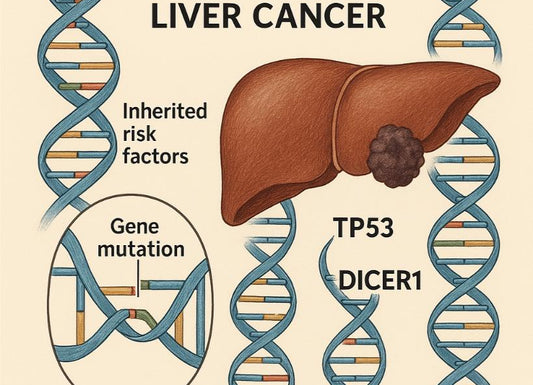Which Cholesterol Drug is Safest for Liver? Taking Medications Safely
 Written By
Jaclyn P. Leyson-Azuela, RMT, MD, MPH
Written By
Jaclyn P. Leyson-Azuela, RMT, MD, MPH

Managing high cholesterol means keeping your liver safe. Each cholesterol medication affects your liver differently, and choosing the right one can feel overwhelming. Your liver processes these drugs every day, which makes it crucial to understand which options protect this vital organ while lowering your cholesterol.
Finding which cholesterol drug is safest for liver means balancing effectiveness with minimal side effects. Different drug types work in various ways, and some put less strain on your liver than others. This article shows you the safest options and helps you make smart decisions about your heart health while protecting your liver in the process.
Key Insights
-
Rosuvastatin shows better liver safety profiles compared to atorvastatin in most clinical studies
-
PCSK9 inhibitors offer excellent LDL reduction without liver processing, making them liver-friendly alternatives
-
Fenofibrate carries higher liver enzyme elevation risks compared to modern statin options
-
At-home liver testing can monitor drug-related liver changes before symptoms appear
-
Fatty liver patients can safely use rosuvastatin under proper medical supervision
-
Liver enzyme monitoring during the first 3-6 months prevents serious complications
Which Cholesterol Drug is Safest for Liver?
The safest cholesterol drugs cause minimal liver enzyme changes while lowering cholesterol effectively. Modern research shows that newer statin formulations, particularly rosuvastatin, have superior liver safety compared to older alternatives.
Your liver’s enzyme levels show how well it handles any medication. Safe cholesterol drugs keep these enzyme levels normal while delivering powerful cholesterol reduction. Understanding how different medications interact with your liver is essential for making the right choice.

Liver-safe cholesterol medications work through different pathways:
-
Statins block cholesterol production in the liver
-
PCSK9 inhibitors work outside the liver, reducing processing strain
-
Bile acid sequestrants bind cholesterol in the intestines
-
Fibrates affect fat processing but require careful monitoring
The safest approach includes regular liver function monitoring, especially in your first six months of treatment. This monitoring catches problems before they become serious, keeping your liver healthy while your cholesterol improves.
Which is worse on the liver, Rosuvastatin or Atorvastatin?
Rosuvastatin works easier in your liver than atorvastatin. Studies show that rosuvastatin causes fewer liver enzyme problems. It also has lower rates of liver damage. Liver enzyme elevation rates differ significantly between these medications:
-
Rosuvastatin: 0.1-0.2% of patients experience significant enzyme elevation
-
Atorvastatin: up to 3% of patients show concerning liver enzyme increases
The normalization of statin-related increases in liver enzymes is often self-limiting and will go down immediately after stopping the medication. The liver handles each drug differently, which is the main reason why these drugs differ in their effect on liver enzymes. Rosuvastatin requires only minimal processing, while atorvastatin requires more extensive liver work.
People who switch from atorvastatin to rosuvastatin often see better liver function. Nonetheless, both medications are relatively safe with proper monitoring. Serious liver injury is extremely rare with either option.
Is rosuvastatin safer than fenofibrate?
Rosuvastatin is much safer for your liver than fenofibrate. Fenofibrate causes liver enzyme problems more often. It also needs more frequent monitoring than rosuvastatin.
Safety comparison data shows clear differences:
-
There is 20-30x decrease in the risk of liver enzyme elevation if rosuvastatin is used
-
About 3-5% experience elevated liver enzymes with fenofibrate treatment
Monitoring when you’re taking fenofibrate, you need liver function tests done every 3 months initially. Using statins and fenofibrate effectively treat the lipid triad but there are concerns for its toxicity to the liver, muscles, and kidneys.
The difference between rosuvastatin and fenofibrate lies on how they treat dyslipidemia. Rosuvastatin primarily blocks cholesterol production without dramatically altering liver cell function. However, fenofibrate significantly changes how your liver processes fats, creating more metabolic stress on liver cells.
Most people with liver concerns do better with rosuvastatin than fenofibrate. This includes people with fatty liver disease, elevated baseline liver enzymes, or past medication-related liver problems.
Which is better for high LDL, statins or Repatha?
Repatha (evolocumab) lowers LDL better and is safer for your liver. This PCSK9 inhibitor. works by preventing degradation of the liver’s LDL receptors. This means no liver processing burden like statins create.
LDL reduction effectiveness shows impressive results:
-
Up to 60% for statins, specifically rosuvastatin
-
Up to 75% for evolocumab (Repatha)
-
Up to 95.7% for evolocumab and statin treatment combination
-
The peak of effectiveness of Repatha takes up to 4 weeks
Liver safety benefits make Repatha particularly appealing for liver-conscious patients. Since this medication doesn't require liver processing, your liver enzymes typically remain unchanged throughout treatment. This makes it ideal for people with fatty liver disease, elevated baseline enzymes, or previous statin intolerance.
Cost considerations currently limit Repatha use. Insurance companies often require statin failure first. They want to see statin intolerance before approving PCSK9 inhibitors. For patients who qualify, the combination of powerful LDL reduction and liver safety makes Repatha an excellent choice.
Which medicine is the best for reducing LDL?

The best LDL-reducing medicines depend on your specific situation. This includes your cholesterol levels, liver function, and overall health. High-intensity statins like rosuvastatin and atorvastatin remain first-choice treatments. PCSK9 inhibitors offer the most powerful LDL reduction for patients needing aggressive therapy.
Based on the data above, ranking which medicine is best for reducing LDL would have the following pattern:
-
Combination therapy of PCSK9 inhibitor and statin has the highest LDL reducing capacity
-
PCSK9 inhibitor monotherapy follows
-
Statins alone come last
In addition to this list, the combination therapy of a selective inhibitor, Ezetimibe and statin therapy, has an additional 15-25% reduction of LDL.
Individual factors influence the "best" choice significantly. Your age, kidney function, muscle health, and liver status all affect which medication works most effectively for your unique situation. Some people respond dramatically to moderate-dose statins, while others need combination therapy to reach target LDL levels.
Combination therapy approaches often provide the most effective LDL reduction. Adding ezetimibe to a moderate-dose statin frequently achieves better results than maximum-dose statin alone. This approach often has fewer side effects and better liver tolerance.
Response monitoring helps fine-tune your medication choice. Your LDL levels after 6-8 weeks of treatment guide dosage adjustments and combination decisions. Some patients achieve target levels with minimal medication. Others require aggressive multi-drug approaches.
Which is the best medicine to maintain a good liver?
The best medicines for keeping your liver healthy while managing cholesterol have two key features. They need minimal liver processing and low liver enzyme elevation rates. Rosuvastatin, PCSK9 inhibitors, and ezetimibe top the list for liver-conscious cholesterol management.
Liver-protective cholesterol medications work through different mechanisms:
-
Rosuvastatin–minimal liver metabolism, low enzyme elevation risk
-
PCSK9 inhibitors–work outside the liver cells, zero hepatic processing
-
Ezetimibe–blocks intestinal cholesterol absorption, minimal liver impact
-
Bile acid sequestrants–bind cholesterol in intestines, avoid liver processing
Monitoring strategies ensure continued liver health during cholesterol treatment. Baseline liver function tests establish your normal enzyme levels, while follow-up testing at 6-12 weeks catches early changes. Most liver-safe medications require testing only every 6-12 months once levels remain stable.
Lifestyle habits support medication-based liver protection. Limiting alcohol helps your liver handle medications better. Maintaining healthy body weight reduces liver stress. Avoiding other potentially harmful medications protects your liver during cholesterol treatment.
Does rosuvastatin work for a fatty liver?
Rosuvastatin can be safely used in patients with fatty liver disease. It may actually help improve liver fat content. Studies show that rosuvastatin reduces liver fat while effectively lowering cholesterol in patients with nonalcoholic fatty liver disease (NAFLD).
Apart from liver fat reduction, rosuvastatin also has the capacity to normalize liver enzymes with a good safety and is able to maintain cardiovascular benefits.
But, how does rosuvastatin help in reducing LDL cholesterol? It involves multiple pathways. The medication improves insulin sensitivity, reduces inflammation, and decreases liver fat production. These effects work together to improve both cholesterol levels and fatty liver condition simultaneously.
Monitoring needs remain important but not restrictive. Patients with fatty liver should have liver function tests every 3 months initially, then every 6 months once stable. Most people see improvement in both liver enzymes and imaging studies within 3-6 months of starting treatment.
Would taking cholesterol pills damage the liver?
Taking cholesterol pills rarely damages the liver when used properly and monitored correctly. Modern cholesterol medications have excellent safety records. Serious liver injury occurs in less than 1% of patients using current formulations.
Risk categories help identify patients at higher risk:
-
Low risk categories: Normal baseline liver function, no alcohol abuse, and maintains healthy weight
-
Moderate risk categories: Mild enzyme elevation, fatty liver, and multiple medications
-
Higher risk categories: Significant baseline liver disease, heavy alcohol use, and previous drug reactions
Damage prevention strategies minimize these already low risks:
-
Baseline testing
-
Regular monitoring
-
Medication selection
-
Lifestyle support
Early warning signs help catch potential problems before serious damage occurs. Watch for unexplained fatigue, right-sided belly pain, dark urine, or yellowing of skin. These symptoms should prompt immediate medical evaluation. However, these symptoms are extremely rare with modern cholesterol medications.
What are statins, and how safe are they?
Statins are cholesterol-lowering medications that block HMG-CoA reductase. This is the key enzyme your liver uses to make cholesterol. They're among the most studied medications in medical history. They have excellent safety records from decades of research and millions of patient experiences.
How statins work involves blocking cholesterol production:
-
Stop HMG-CoA reductase from making cholesterol
-
Force liver cells to pull cholesterol from blood
-
Reduce inflammation in arterial walls
-
Lower heart attack and stroke risk beyond cholesterol reduction
Statin safety varies among different formulations. Newer statins like rosuvastatin and atorvastatin have better safety records than older options like lovastatin or simvastatin. Your doctor can help select the safest option based on your individual risk factors and health status.

Should you take a statin for your high cholesterol?
You should consider taking a statin if your heart disease risk assessment shows significant benefit potential. This typically includes LDL cholesterol above 100 mg/dL with additional risk factors. It also includes LDL above 160 mg/dL regardless of other factors. The decision involves weighing your individual heart disease risk against potential medication side effects.
Risk assessment tools help guide statin decisions:
-
ASCVD risk calculator: Estimates 10-year heart attack/stroke risk
-
LDL cholesterol levels: Higher levels increase treatment urgency
-
Family history: Strong family history of early heart disease increases benefit
-
Age and gender: Men over 40 and women over 50 generally benefit more
Statin benefit scenarios show clear treatment advantages:
-
High-risk patients: Those with 10-year ASCVD risk above 7.5% see significant benefit
-
Very high LDL: Levels above 190 mg/dL warrant treatment regardless of other factors
-
Existing heart disease: Previous heart attack or stroke patients almost always benefit
-
Diabetes patients: Most adults with diabetes benefit from statin therapy
Treatment goals vary based on your risk category. High-risk patients typically aim for LDL below 70 mg/dL. Moderate-risk individuals target LDL under 100 mg/dL. Your doctor will help establish appropriate goals based on your complete risk picture.
Statins for patients with nonalcoholic fatty liver?
Statins are generally safe and often helpful for patients with nonalcoholic fatty liver disease (NAFLD). Current medical guidelines support statin use in NAFLD patients when heart disease risk justifies treatment. These medications may actually improve liver function and reduce liver fat content.
Monitoring recommendations for NAFLD patients taking statins:
-
Complete liver function panel before starting treatment
-
Check liver enzymes at 6-12 weeks, then every 6 months
-
Repeat ultrasound or MRI after 6-12 months to assess liver fat improvement
-
Watch for unusual fatigue or abdominal pain
Contraindications stay limited even in NAFLD patients. Only those with active hepatitis need to avoid statins. The same goes for people with significantly elevated baseline enzymes (more than 3 times normal) or cirrhosis. These patients typically need hepatology consultation before starting treatment.
Could your statin help prevent liver cancer?
Your statin might help prevent liver cancer. This is especially true if you have risk factors like fatty liver disease, hepatitis, or diabetes. Research suggests that statins reduce liver cancer risk by up to 40%. This makes them potentially protective beyond their cholesterol-lowering effects.
Cancer prevention works through multiple pathways:
-
Reduce chronic liver inflammation that leads to cancer
-
Block pathways that promote abnormal cell division
-
Improve liver's ability to detect and destroy abnormal cells
-
Better insulin sensitivity and liver fat reduction
Who benefits most from statin cancer protection includes those with hepatitis B or C, nonalcoholic fatty liver disease, diabetes, or family history of liver cancer. However, you shouldn't start a statin solely for cancer prevention, the cardiovascular benefits should justify treatment.
What this means for you is your cholesterol medication might provide unexpected long-term liver protection. This additional benefit adds to the already strong case for statin therapy in appropriate patients. This is especially true for those with multiple risk factors for both heart disease and liver cancer.
What Can At-Home Liver Test Do For Drug-Related Liver Injuries?
At-home liver tests can detect early signs of drug-related liver injury before symptoms appear. This allows you to catch potential problems when they're most treatable. These tests measure key liver enzymes and proteins that change when medications stress your liver. They provide crucial early warning signals.
Early detection advantages of home testing include:
-
Convenience factor
-
Frequent monitoring
-
Symptom-free detection
-
Treatment adjustment
Key biomarkers measured in home liver tests:
-
ALT (alanine aminotransferase)
-
AST (aspartate aminotransferase)
-
Bilirubin
-
Albumin
Test timing strategies help keep drugs safe:
-
Baseline testing
-
Early monitoring (between doctor appointments)
-
Ongoing checks
-
Symptom-triggered testing
Results help you decide about medication safety. Normal results provide reassurance. Elevated enzymes prompt discussion with your healthcare provider about dosage adjustment or medication changes.

How Do At-Home Liver Testing Work?
At-home liver tests work by measuring specific enzymes and proteins in your blood. They use small fingerstick samples that you collect yourself. These tests use the same laboratory technology as hospital tests. The difference is you collect the sample at home and mail it to a certified laboratory for analysis. a certified laboratory for analysis.
Collection process is straightforward and user-friendly:
-
Fingerstick sampling
-
Sample collection
-
Send out preparation (particularly if you need to send it to a laboratory
-
Laboratory processing
Technology behind testing ensures accuracy:
-
Dried blood spots
-
Quality control
-
Professional analysis
-
Result delivery
Limitations to consider include timing of sample collection, proper storage conditions, and the need for professional interpretation of abnormal results. While home testing provides excellent screening, abnormal results always require follow-up with your healthcare provider.
There is also another way to monitor liver health and that is to monitor the biomarkers coming from the liver that are excreted through the kidneys into the urine. At-home urine liver testing is the simplest method you can use to determine whether bilirubin and other biomarkers are present in the urine.
Quick Summary Box
-
Rosuvastatin shows superior liver safety compared to older cholesterol medications
-
PCSK9 inhibitors offer powerful cholesterol lowering without liver processing burden
-
At-home liver monitoring catches drug-related problems before symptoms develop
-
Fatty liver patients can safely use most modern cholesterol medications with proper monitoring
-
Early enzyme elevation is often reversible when detected and addressed promptly
-
Combination therapy may reduce individual medication doses while maintaining effectiveness
References:
Clarke, A. T., & Mills, P. R. (2006). Atorvastatin associated liver disease. Digestive and Liver Disease, 38(10), 772–777. https://doi.org/10.1016/j.dld.2006.04.013
Famularo, G., Miele, L., Minisola, G., & Grieco, A. (2007). Liver toxicity of rosuvastatin therapy. World Journal of Gastroenterology : WJG, 13(8), 1286–1288. https://doi.org/10.3748/wjg.v13.i8.1286
Genest, J. (2006). Combination of statin and ezetimibe for the treatment of dyslipidemias and the prevention of coronary artery disease. Canadian Journal of Cardiology, 22(10), 863–868. https://doi.org/10.1016/s0828-282x(06)70305-1
Grundy, S. M., & Feingold, K. R. (2022, May 28). Guidelines for the management of high blood cholesterol. PubMed; MDText.com, Inc. https://www.ncbi.nlm.nih.gov/books/NBK305897/
Gupta, M., Wani, R. J., Al Faraidy, K., Bergeron, J., Contreras, E., Peña, A. A. G., Mancini, G. B. J., Padilla, F., Lopez, A. A. P., Philip, K., Wu, J., & Mackinnon, E. S. (2023). Real-World Insights into Evolocumab Use in Patients with Hyperlipidemia Across Five Countries: Analysis from the ZERBINI Study. Cardiology and Therapy, 12(4), 703–722. https://doi.org/10.1007/s40119-023-00334-5
He, Y., Qin, M., & Chen, Y. (2021). Liver injury caused by fenofibrate within 48 h after first administration: a case report. BMC Gastroenterology, 21(1). https://doi.org/10.1186/s12876-021-01874-7
Koren, M. J., Giugliano, R. P., Raal, F. J., Sullivan, D., Bolognese, M., Langslet, G., Civeira, F., Somaratne, R., Nelson, P., Liu, T., Scott, R., Wasserman, S. M., & Sabatine, M. S. (2014). Efficacy and Safety of Longer-Term Administration of Evolocumab (AMG 145) in Patients With Hypercholesterolemia. Circulation, 129(2), 234–243. https://doi.org/10.1161/circulationaha.113.007012
Koskinas, K. C., Windecker, S., Pedrazzini, G., Mueller, C., Cook, S., Matter, C. M., Muller, O., Häner, J., Gencer, B., Crljenica, C., Amini, P., Deckarm, O., Iglesias, J. F., Räber, L., Heg, D., & Mach, F. (2019). Evolocumab for Early Reduction of LDL Cholesterol Levels in Patients With Acute Coronary Syndromes (EVOPACS). Journal of the American College of Cardiology, 74(20), 2452–2462. https://doi.org/10.1016/j.jacc.2019.08.010
LiverTox. (2012). Rosuvastatin. PubMed; National Institute of Diabetes and Digestive and Kidney Diseases. https://www.ncbi.nlm.nih.gov/books/NBK548620/
McPherson, R., Najah Adreak, & Sharma, A. (2024). Medications for Lipid Control: Statins vs Newer Drugs. Canadian Journal of Cardiology, 40(8), S26–S34. https://doi.org/10.1016/j.cjca.2024.05.004
Nanepag, P. V., Mangrulkar, S. V., Aarti Shriwas, Kale, M. B., Sapana Kushwaha, Wankhede, N. L., Taksande, B. G., & Umekar, M. J. (2025). Statin Therapy for NAFLD: Molecular underpinnings of Myopathic Consequences and Treatment Strategies. Aspects of Molecular Medicine, 100091–100091. https://doi.org/10.1016/j.amolm.2025.100091
National Cholesterol Education Program. (2001). Determine Lipoprotein Levels–obtain Complete Lipoprotein Profile after 9-to 12-hour fast. Identify Presence of Clinical Atherosclerotic Disease That Confers High Risk for Coronary Heart Disease (CHD) Events (CHD Risk equivalent) High Blood Cholesterol ATP. https://www.nhlbi.nih.gov/files/docs/guidelines/atglance.pdf
Page, M. M., & Watts, G. F. (2016). Experimental and clinical pharmacology: PCSK9 inhibitors - mechanisms of action. Australian Prescriber, 39(5), 164–167. https://doi.org/10.18773/austprescr.2016.060
Pastori, D., Polimeni, L., Baratta, F., Pani, A., Del Ben, M., & Angelico, F. (2015). The efficacy and safety of statins for the treatment of non-alcoholic fatty liver disease. Digestive and Liver Disease, 47(1), 4–11. https://doi.org/10.1016/j.dld.2014.07.170
Shi, M., Zheng, H., Nie, B., Gong, W., & Cui, X. (2014). Statin use and risk of liver cancer: an update meta-analysis. BMJ Open, 4(9), e005399–e005399. https://doi.org/10.1136/bmjopen-2014-005399
Strain, J. D., & Farver, D. (2010). A review on the rationale and clinical use of concomitant rosuvastatin and fenofibrate/fenofibric acid therapy. Clinical Pharmacology: Advances and Applications, 95. https://doi.org/10.2147/cpaa.s7375
Zacharia, G., Jacob, A., Manivarnan Karichery, & Abhishek Sasidharan. (2024). Impact of statins in the liver: A bane or a boon? Canadian Liver Journal. https://doi.org/10.3138/canlivj-2023-0028

Jaclyn P. Leyson-Azuela, RMT, MD, MPH, is a licensed General Practitioner and Public Health Expert. She currently serves as a physician in private practice, combining clinical care with her passion for preventive health and community wellness.



